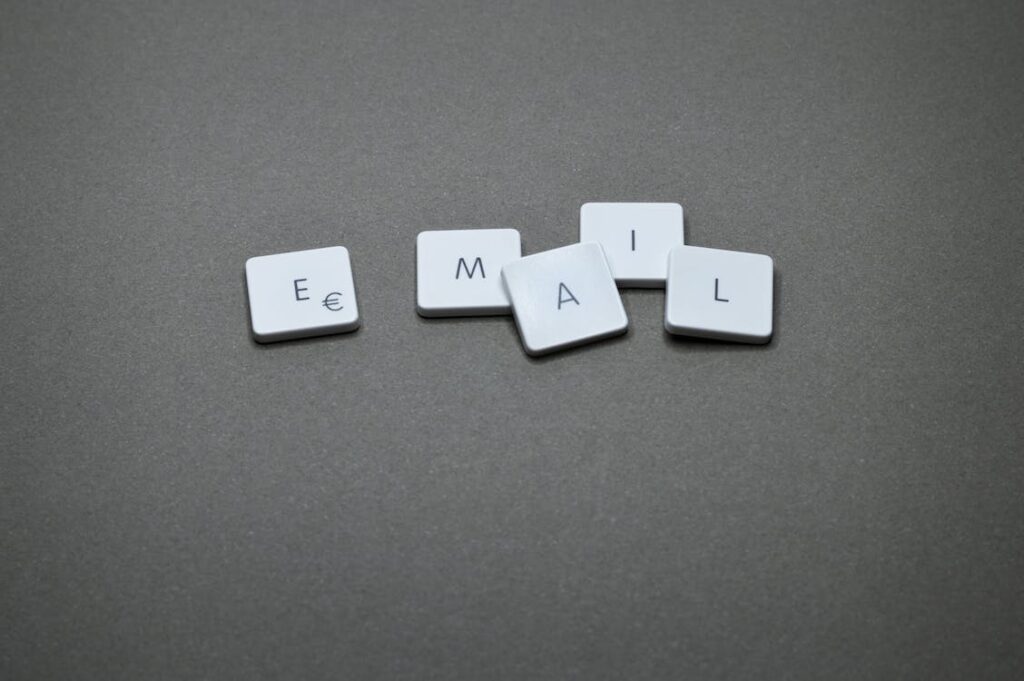In the bustling world of healthcare, where every second count and every interaction matters, email marketing emerges as a beacon of personalized communication. It’s more than just newsletters and appointment reminders; it’s about building a rapport with patients and professionals alike, offering them valuable information at their fingertips. In the healthcare sector, email marketing has the power to bridge the gap between the personal touch of a local practice and the efficiency of digital communication. It enables healthcare providers to stay connected with their patients, share crucial health updates, and foster a community around wellness and proactive health management. However, there’s a delicate balance to strike. With regulations like HIPAA in the United States, which ensure patient privacy and data security, email marketing in healthcare demands a nuanced approach. It’s not just about what you say but how you say it and the measures you take to safeguard patient information.
The Significance of Email Marketing in Healthcare
Building Trust with Patients
Trust is the cornerstone of any healthcare relationship. Email marketing offers an opportunity to build and maintain this trust beyond the clinic walls. It’s a direct line to your patients, where you can provide health tips, news, and personalized care reminders. This ongoing dialogue helps cement your role not just as a provider but as a reliable health partner.
Educating Patients and Staff
Healthcare is as much about education as it is about treatment. Emails can be a treasure trove of knowledge, breaking down complex medical jargon into bite-sized, understandable content. For professionals, it can be about the latest research, drug approvals, or medical protocols that keep them ahead of the curve.
Staying Compliant with Regulations
HIPAA-compliant email marketing is not optional; it’s a must. This compliance reassures patients that their data is in safe hands. It’s an unspoken promise that their well-being, both physical and digital, is your utmost priority.
Best Practices for Crafting Emails in Healthcare
Respecting Privacy and Data Security
Every email sent must comply with privacy laws. Use secure email platforms, encrypt sensitive information, and never share personal health information unless it’s through protected channels. Privacy isn’t just a legal requirement; it’s a patient expectation.
Creating Content That Cares
Content is the heart of your email marketing. Create content that reflects the care you provide—compassionate, informed, and helpful. Your emails should feel like a check-up from a friend rather than a cold, clinical report.
Personalization with a Purpose
Personalization goes beyond using a patient’s name. It’s about tailoring content to their health journey. From follow-up care instructions to general wellness tips based on their conditions, personalized content shows you’re attentive to their individual needs.
Types of Emails for the Healthcare Sector
Appointment Reminders and Follow-Ups
Missed appointments are more than just a scheduling hiccup; they’re a lost opportunity for care. Email reminders ensure patients keep their health in check and show that their healthcare providers are proactive. The follow-up emails post-appointment can provide care instructions, ask for feedback, or simply offer a thank-you, making patients feel valued and looked after.
Educational Content and Health Tips
Providing value through education is a powerful way to engage. Monthly newsletters featuring health tips, seasonal advisories (like flu season reminders), and explanations of common health issues can be incredibly beneficial. They empower patients to take charge of their health, positioning your practice as a trusted source of knowledge.
Patient Surveys and Feedback Requests
Understanding patient satisfaction can lead to improved services and patient care. Surveys and feedback request emails are indispensable tools for gathering these insights. They communicate that a patient’s opinion is vital and that you’re committed to evolving and enhancing your service.
News and Updates in the Health Field
Keeping patients and professionals informed about the latest health news, technology advancements, and treatment options showcases your engagement with the industry’s cutting edge. It also keeps your practice relevant and at the forefront of the healthcare conversation.
Seasonal Campaigns
Tailoring content to the time of year can be very effective. For instance, emails about staying healthy during the holidays, allergy triggers in spring, or sun safety in summer provide timely, relevant information that patients will appreciate.
Crafting Engaging and Actionable Emails
The Power of Subject Lines
The subject line is your first impression. In healthcare, it must strike a balance between attention-grabbing and professional. Subject lines should be clear, concise, and compelling, reflecting the content’s value without resorting to fear-mongering or sensationalism.
Designing for Readability and Accessibility
Email design in healthcare should prioritize clarity. Use a clean layout, legible fonts, and a well-organized structure to make information accessible to everyone, including those with visual impairments or cognitive challenges.
Ensuring Calls to Action (CTAs) are Clear
A CTA in a healthcare email should be unmistakable and helpful. Whether you’re asking patients to book an appointment, view a health portal, or read about a new service, the CTA must be clear and easy to follow.
Incorporating Multimedia and Interactive Elements
A picture is worth a thousand words, and this holds especially true in healthcare. Use images and videos to explain complex information. Interactive elements like polls or quizzes can also engage patients, making learning about health more interactive and fun.
Certainly! Here’s a rewritten and more detailed exploration of the subtleties involved in segmenting audiences, crafting content, and determining timing for email marketing in the healthcare sector.
Segmenting Your Audience for Tailored Communication
The Art of Audience Analysis
A thorough audience analysis is the bedrock of successful email marketing. It involves a deep dive into the demographics, behaviors, and preferences of your patient base. This means examining age distribution, health conditions prevalent in your patient population, past interactions with your healthcare services, and feedback collected through previous communication. By analyzing this data, you begin to see patterns that allow for the creation of specific and meaningful patient segments. For instance, patients with chronic conditions such as diabetes or heart disease might benefit from regular updates about managing their health, while parents of young children may be more responsive to pediatric health tips.
Segment Creation Based on Patient Insights
Armed with insights from your audience analysis, you can now form patient segments that reflect distinct groups within your larger audience. A detailed patient profile that includes information like age, medical history, medication adherence, and even lifestyle factors can guide the content of your emails to each group. For example, segments could include patients who are managing acute conditions, those undergoing rehabilitation, individuals interested in wellness and preventive care, and other specialized groups like expectant mothers or geriatric patients.
Deep Personalization for Each Group
Crafting deeply personalized content for each segment requires a strategic approach. This means not just addressing patients by name but also acknowledging their specific health journey. An email to a segment of post-op patients, for example, might focus on rehabilitation exercises, signs of complications to watch for, and encouragement for the recovery process. This level of personalization conveys empathy and a deep understanding of the patient’s experience, fostering a stronger connection and enhancing the value of your email content.
Dynamic Segmentation as a Continuous Process
Patient needs and circumstances evolve, and your segmentation should be agile enough to accommodate these changes. Regularly update your patient segments based on the latest interactions, health updates, and feedback. This might include shifting a patient from a pre-operative care segment to a post-operative care segment following surgery, or adding new parents to a pediatric care segment as your patient demographics shift.
Crafting Content That Resonates with Each Segment
Educational Content That Hits Home
When you understand your segments, you can develop educational content that feels tailor-made. For instance, content for elderly patients might focus on managing chronic conditions and preventing common ailments, while younger segments might be more interested in fitness and nutrition. Educational emails should be concise, authoritative, and friendly, giving patients the knowledge they need in a format that is easy for them to digest and act upon.
Preventive Health Initiatives That Connect
Preventive health emails can have a significant impact on patient behavior when they’re properly aligned with the interests and needs of each segment. During the heart health month, for example, patients with a family history of heart disease might receive emails about screening tests, diet, and exercise programs to prevent heart conditions. These campaigns should not only educate but also inspire patients to take proactive steps towards their health.
Recovery and Treatment Information That Supports
Patients on a treatment or recovery path require information that aids in their healing process. Customizing this information helps ensure that it’s relevant and actionable. For instance, an email series for post-surgery patients might include tips for at-home care, signs of complications to be aware of, and motivational stories of other patients who have successfully recovered. This targeted content can provide comfort and clarity to patients when they need it most.
Promotional Content That Feels Beneficial
Promotional emails must tread carefully in the healthcare space to remain tasteful and patient-centric. For instance, introducing a new wellness program or a state-of-the-art diagnostic tool can be framed in a way that highlights the benefits to the patient rather than simply serving as an advertisement. Each promotion should feel like a natural extension of your care, offering genuine value.

Related: Check out our free SEO suite

Timing and Frequency for Optimal Engagement
The Strategic Timing of Your Emails
The effectiveness of an email can often hinge on when it is sent. The best timing for healthcare-related emails can depend on factors such as seasonality (like flu shot reminders in early autumn), patient schedules (like wellness check-up prompts at the beginning of the year), and even the days of the week or times of day when patients are most likely to engage with their emails. This strategic timing ensures that your emails are not only read but are also acted upon.
Finding the Right Cadence to Avoid Overload
Email frequency is a balancing act. On the one hand, you want to stay top-of-mind with your patients; on the other, you don’t want to overwhelm them. Determining the right cadence involves understanding patient preferences, which can vary greatly. Some may appreciate weekly tips, while others might prefer a monthly digest. Monitoring open rates and engagement metrics can provide guidance on how often to send emails to each segment.
Responsiveness to Patient Engagement
The way patients interact with your emails offers invaluable insights. If certain types of content trigger higher engagement, that’s a cue to produce more of that content. Conversely, if engagement dips following a certain email, it’s worth reevaluating the content, timing, or frequency. Continuously adapting your strategy based on patient interaction helps maintain a dynamic and responsive email marketing approach.
Conclusion
In conclusion, email marketing in the healthcare sector is not just about sending out information. It’s about building relationships, supporting patients on their health journey, and connecting with them in a way that respects their individual needs and preferences. It’s about using thoughtful segmentation, engaging content, and smart timing to provide value that goes beyond a simple message in an inbox. Healthcare providers who embrace the full potential of email marketing will not only see improved patient engagement but also better health outcomes. As this sector continues to evolve with technology, the opportunities for meaningful connection between healthcare providers and their patients will only grow stronger.
READ NEXT:
- How First Resonance Can Boost their Website Traffic to 10k in 3 Months! (Our Take!)
- Long-Form vs. Short-Form Content: Which is Right for Your Brand?
- 45+ Productivity Apps for Entrepreneurs (2023 Edition)
- Email Marketing for the Travel and Tourism Sector: Engaging Travel Enthusiasts
- How Aisles Can Boost their Website Traffic to 10k in 3 Months! (Our Take!)






















Comments are closed.